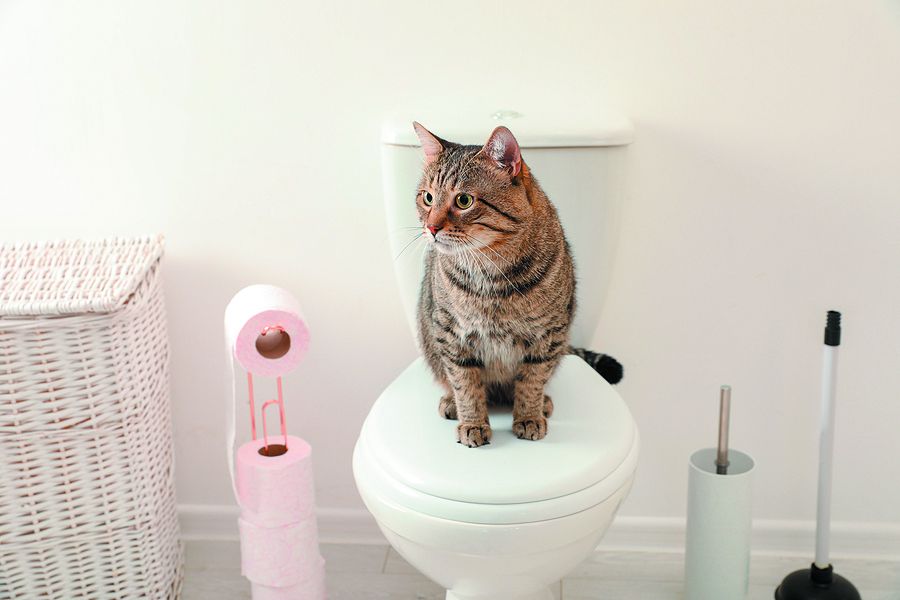Everybody has their own unique perception on the subject of How to Dispose of Cat Poop and Litter Without Plastic Bags.

Introduction
As cat proprietors, it's vital to be mindful of exactly how we throw away our feline good friends' waste. While it might appear convenient to purge feline poop down the commode, this method can have damaging effects for both the setting and human health.
Alternatives to Flushing
Thankfully, there are much safer and a lot more accountable ways to get rid of feline poop. Take into consideration the following choices:
1. Scoop and Dispose in Trash
The most usual technique of dealing with pet cat poop is to scoop it into a biodegradable bag and toss it in the garbage. Make sure to use a devoted clutter inside story and take care of the waste quickly.
2. Usage Biodegradable Litter
Opt for naturally degradable pet cat litter made from products such as corn or wheat. These clutters are environmentally friendly and can be safely dealt with in the trash.
3. Hide in the Yard
If you have a yard, think about burying cat waste in a designated location away from vegetable yards and water sources. Be sure to dig deep enough to prevent contamination of groundwater.
4. Mount a Pet Waste Disposal System
Invest in an animal garbage disposal system especially made for feline waste. These systems utilize enzymes to break down the waste, decreasing smell and environmental effect.
Health Risks
Along with ecological issues, purging pet cat waste can also position wellness threats to people. Feline feces might contain Toxoplasma gondii, a parasite that can trigger toxoplasmosis-- a potentially severe disease, specifically for expecting females and individuals with damaged body immune systems.
Ecological Impact
Purging pet cat poop presents harmful virus and parasites right into the supply of water, posing a significant danger to aquatic ecological communities. These contaminants can adversely impact aquatic life and compromise water quality.
Verdict
Liable animal possession expands beyond offering food and sanctuary-- it additionally includes proper waste monitoring. By avoiding purging cat poop down the bathroom and going with alternative disposal techniques, we can minimize our environmental footprint and protect human health.
Why Can’t I Flush Cat Poop?
It Spreads a Parasite
Cats are frequently infected with a parasite called toxoplasma gondii. The parasite causes an infection called toxoplasmosis. It is usually harmless to cats. The parasite only uses cat poop as a host for its eggs. Otherwise, the cat’s immune system usually keeps the infection at low enough levels to maintain its own health. But it does not stop the develop of eggs. These eggs are tiny and surprisingly tough. They may survive for a year before they begin to grow. But that’s the problem.
Our wastewater system is not designed to deal with toxoplasmosis eggs. Instead, most eggs will flush from your toilet into sewers and wastewater management plants. After the sewage is treated for many other harmful things in it, it is typically released into local rivers, lakes, or oceans. Here, the toxoplasmosis eggs can find new hosts, including starfish, crabs, otters, and many other wildlife. For many, this is a significant risk to their health. Toxoplasmosis can also end up infecting water sources that are important for agriculture, which means our deer, pigs, and sheep can get infected too.
Is There Risk to Humans?
There can be a risk to human life from flushing cat poop down the toilet. If you do so, the parasites from your cat’s poop can end up in shellfish, game animals, or livestock. If this meat is then served raw or undercooked, the people who eat it can get sick.
In fact, according to the CDC, 40 million people in the United States are infected with toxoplasma gondii. They get it from exposure to infected seafood, or from some kind of cat poop contamination, like drinking from a stream that is contaminated or touching anything that has come into contact with cat poop. That includes just cleaning a cat litter box.
Most people who get infected with these parasites will not develop any symptoms. However, for pregnant women or for those with compromised immune systems, the parasite can cause severe health problems.
How to Handle Cat Poop
The best way to handle cat poop is actually to clean the box more often. The eggs that the parasite sheds will not become active until one to five days after the cat poops. That means that if you clean daily, you’re much less likely to come into direct contact with infectious eggs.
That said, always dispose of cat poop in the garbage and not down the toilet. Wash your hands before and after you clean the litter box, and bring the bag of poop right outside to your garbage bins.
https://trenchlesssolutionsusa.com/why-cant-i-flush-cat-poop/

I hope you liked our part about Can You Flush Cat Poo or Litter Down the Toilet?. Many thanks for taking the time to browse our piece of content. Sharing is caring. One never knows, you will be helping someone out. We treasure reading our article about How to Dispose of Cat Poop and Litter Without Plastic Bags.
Call Today